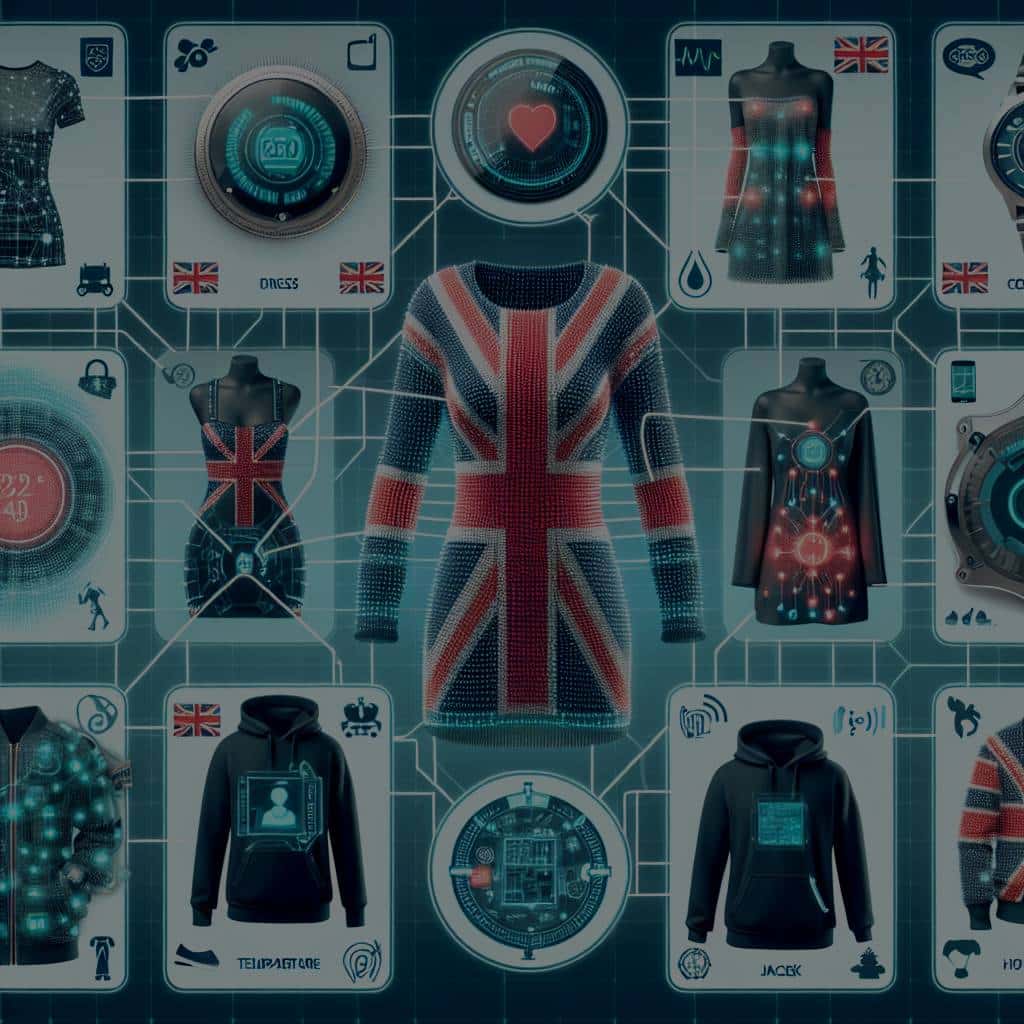What are the cutting-edge developments in smart fabric technology for UK’s fashion industry?

Fashion is an industry constantly driven by innovation. From experimenting with new materials and designs to incorporating sophisticated technology, the fashion industry is always pushing the boundaries of what is possible. Recently, the UK has emerged as a leader in one particular innovation: smart fabric technology.
Smart fabric, also known as e-textiles or digital clothing, refers to textiles that incorporate digital components and electronic devices into their design. These electronic textiles are not only wearable but are also able to communicate, transform, energy storage and conduct sensing. They are made from fibres with properties that change in response to stimuli such as heat or pressure.
En parallèle : How to integrate mindfulness practices in UK’s corporate work environments?
What is Smart Clothing?
Smart clothing is a revolutionising concept in the fashion and technology world. It refers to garments that have been integrated with technologies that provide value-added services such as health monitoring, fitness tracking, navigation assistance, and more. This fusion of fashion and technology is not limited to practical applications; it also expands to aesthetically pleasing designs incorporating light-emitting diodes (LEDs) and other visual effects.
These intelligent garments are typically made from smart textiles – fabrics that have been designed and manufactured to include technologies that provide the wearer with increased functionality. The technologies embedded in these materials can collect data from the wearer’s environment or the wearer’s body, making smart clothing a potent tool for gathering scalable data in real-time.
Lire également : How to ensure cybersecurity when working from home in the UK’s digital landscape?
The Intricate Design of Smart Textiles
The design of smart textiles is a complex process that merges traditional textile knowledge with cutting-edge electronic industry techniques. It involves syncing the art of fashion design with conductive materials, electronic circuits, and digital technologies. The textile industry is developing fabrics that are not just platforms for attaching sensors, but an integral part of the device itself.
The smart fabric design process starts with choosing materials that can be integrated into the textile’s structure. These materials include conductive fibres or yarns made from metals such as silver and copper, or conductive polymers. The chosen material should allow for easy integration of electronic components while retaining flexibility and comfort. The design process also involves incorporating sensors and other electronic devices into the fabric, which can monitor various parameters when worn.
Market Growth and Trends in Smart Clothing
The market for smart clothing and textiles is growing rapidly, driven by increasing consumer interest and advancements in wearable technology. As per the latest market research reports, the global smart clothing market is expected to reach $5.3 billion by 2022. The UK, in particular, is set to play a significant role in this growth, with numerous fashion tech startups and established fashion houses alike investing heavily in smart clothing and textiles development.
Smart clothing is becoming increasingly popular in various sectors, including healthcare, sports and fitness, military, and fashion. In the healthcare sector, smart clothing devices are used to monitor patients’ vital signs and physical conditions. In the sports and fitness industry, they help track performance metrics and provide real-time feedback to athletes and coaches. The military uses smart clothing for monitoring the health and wellness of soldiers in the field. In the fashion industry, smart clothing is making waves with innovative designs that are both stylish and functional.
The Future of Smart Fabric in the UK’s Fashion Industry
The future of the UK’s fashion industry is undoubtedly tied to smart fabric technology. The potential for creating clothing that not only looks good but also serves practical functions is enormous. Already, the industry is seeing products based on smart fabric technology that can monitor heart rate, body temperature, and even emotional state.
In the coming years, advancements in technology could see the development of garments that change colour or pattern at the touch of a button, or jackets that can charge your smartphone. We could also see clothing that adapts to weather conditions, warming you up or cooling you down as needed.
While there are numerous possibilities, it is clear that smart fabric technology is set to disrupt the UK’s fashion industry in a significant way. As technology evolves and consumer demand for these products increases, the UK’s fashion industry will need to continue to innovate and adapt to stay at the forefront of this exciting trend.
While the potential of smart textiles is enormous, there are still several challenges to be overcome, including issues related to durability, washability, power sources, and data privacy. However, the fashion industry’s innovative nature, coupled with advances in textile and electronic technologies, is likely to address these obstacles, bringing us closer to the day when smart clothing becomes a commonplace part of our everyday lives.
In the end, smart textiles represent a significant opportunity for the UK’s fashion industry. By embracing this exciting new technology, the industry can continue to lead in innovation and design, creating products that are not just fashionable, but smart as well.
Smart Textiles Application in Different Industries
In the fashion industry, smart textiles have a transformative potential. With the increasing interest in wearable electronics, innovative materials such as electronic textiles, conductive yarns, and smart fabrics are dramatically redefining the concept of clothing.
In healthcare, smart clothing plays a crucial role in monitoring the patient’s physical conditions in real time. Garments embedded with sensors to track vital parameters like heart rate, body temperature, and overall wellness are now widely used. Furthermore, these high-tech garments can also be used to monitor the emotional state of the wearer, opening new avenues for mental health treatment.
The sports and fitness industry is another sector where smart textiles have made a significant impact. Athletes and coaches can now use clothing with integrated sensors to track performance metrics and provide real-time feedback, enhancing training efficiency and performance.
The military sector also benefits from smart clothing. The health and wellness of soldiers in the field are monitored using garments with embedded sensors, improving the chances of early detection of any potential health issues and ensuring their safety.
In the fashion industry, smart textiles are making waves by introducing innovative designs. Apart from being aesthetically pleasing, these garments can also change color, adapt to the weather conditions, and even charge your smartphone, combining fashion with practicality and convenience.
Overcoming Challenges and the Future of Smart Fabric in the UK’s Fashion Industry
While the potential of smart textiles is immense, several challenges need to be addressed. The fashion industry needs to overcome issues related to the durability and washability of smart fabrics. It is crucial to ensure that the embedded electronic components can withstand everyday use and laundering without losing their functionality.
Another significant challenge is the provision of a suitable power source for these electronic textiles. While the development of conductive yarns and textile-based power sources is ongoing, it is still an area that requires further research and innovation.
Data privacy is another concern. As smart clothing collects data from the human body in real time, it is essential to have robust security measures in place to prevent any potential data breaches and ensure user privacy.
Despite these challenges, the future of smart fabric in the UK’s fashion industry looks promising. Advances in textile and electronic technologies, coupled with the innovative nature of the fashion industry, are expected to bring us closer to the day when smart clothing becomes a commonplace part of our everyday lives.
The UK’s fashion industry is well-positioned to lead the revolution in smart clothing. With a thriving fashion tech startup scene and established fashion houses investing in smart textiles, the UK is poised to remain at the forefront of this exciting trend. As the demand for these products increases, the UK’s fashion industry will need to continue to innovate and adapt, creating products that are not just fashionable, but smart as well.
In conclusion, smart textiles represent a significant opportunity for the UK’s fashion industry. By embracing this cutting-edge technology, the industry can continue to lead in innovation and design, shaping the future of clothing. From health monitoring to performance tracking, aesthetic enhancements to practical conveniences, the possibilities are endless. The fusion of fashion and technology in the form of smart clothing is set to redefine our relationship with what we wear. As this exciting new chapter in the fashion industry unfolds, the phrase ‘dress smart’ will take on a whole new meaning.
